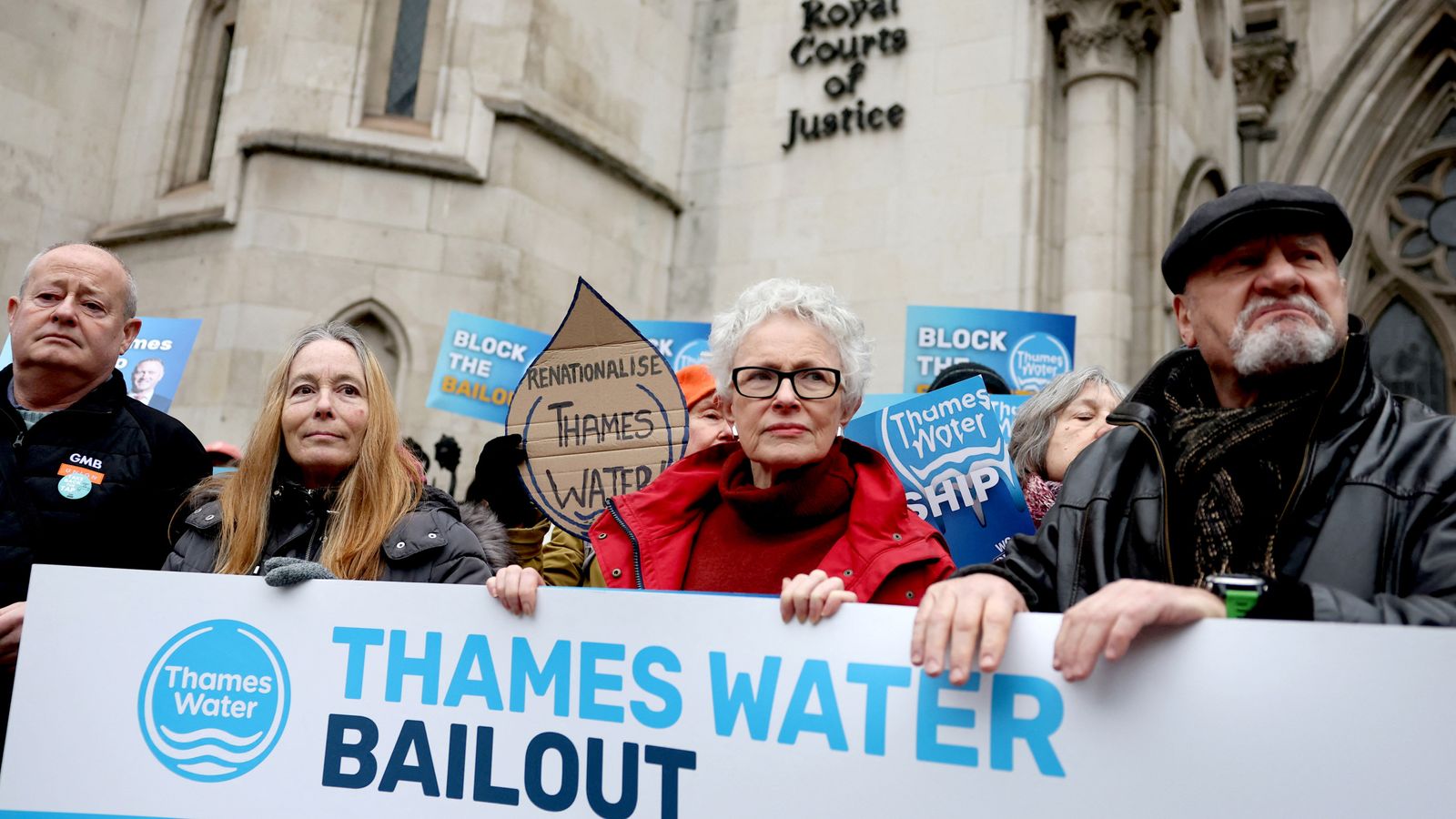U.K News
What’s happening with Thames Water, why’s it in court and could it be nationalised?

Thames Water’s Financial Crisis: A Race Against Time
The UK’s largest water provider, Thames Water, is facing a critical juncture as its financial future hangs in the balance. With debts spiraling to £16 billion and investors deeming the company "uninvestable," the utility giant is battling to avoid collapse. The immediate solution being pursued is a £3 billion rescue loan, but the road ahead is fraught with challenges. Here’s a breakdown of the crisis, the court battle, and what lies ahead for Thames Water.
How Did Thames Water End Up in This Position?
Thames Water, which serves approximately 16 million customers in London and the South East, has been grappling with a perfect storm of financial and regulatory pressures. The company’s dire situation stems from years of underinvestment, mismanagement, and hefty dividend payouts to shareholders. These factors, combined with significant fines for environmental and regulatory breaches, have left the utility provider on the brink of insolvency.
The financial strain has been exacerbated by a clampdown on shareholder payouts, making it harder for Thames Water to attract new investors. With debts totaling £16 billion, the company is now pinning its hopes on a £3 billion emergency loan to stave off bankruptcy. The loan, split into two tranches of £1.5 billion each, is being sought from its A-class creditors, who hold approximately £11 billion of the company’s debt.
A Controversial Rescue Plan and Court Battle
Thames Water has applied to the High Court for approval of its £3 billion rescue plan, with a decision expected on Tuesday morning. The loan, provided by A-class creditors, comes with steep terms: an interest rate of 9.75% over two and a half years, plus up to £100 million in fees. Critics, including water campaigners, have slammed the deal, arguing that it prioritizes creditor interests over those of customers and the environment.
Campaigners are urging Environment Secretary Steve Reed to block the arrangement and instead place Thames Water into special administration, a form of temporary nationalization. They argue that this would allow the company to restructure without burdening taxpayers or customers with excessive costs. However, Thames Water insists the loan is essential to prevent cash reserves from drying up by 24 March, which would otherwise lead to operational collapse.
What Happens if the Loan Isn’t Approved?
The High Court’s approval of the rescue plan hinges on securing the agreement of at least 75% of Thames Water’s creditors. If the deal falls through, the company will be forced to explore alternative options, potentially leaving creditors no worse off than they are now. Failure to secure the loan significantly increases the likelihood of Thames Water entering special administration or being nationalized.
Nationalization, while not the government’s preferred solution, is being considered as a last resort. Reports suggest that private sector administrators have already been contacted to prepare for such an eventuality. Should Thames Water fail to secure the necessary funding, customers could face further bill hikes, and the company’s future would remain uncertain.
What If the Loan Is Approved?
If the High Court gives the green light to the £3 billion loan, Thames Water plans to embark on a comprehensive restructuring effort. This would involve bringing in new shareholder investments and potentially swapping debt for equity, giving existing creditors a stake in the company. However, the utility provider is also locked in a dispute over customer bills, having sought a 53% price increase from 2025 to 2030. This demand was rejected, with regulators instead approving a 35% rise as part of a broader price determination for water suppliers in England and Wales.
Alternatives to Nationalization and the Way Forward
While nationalization remains a possibility, the government is keen to explore market-based solutions. Several companies, including energy giant Octopus Energy and infrastructure firm CK Infrastructure Holding, have expressed interest in investing in Thames Water’s technology arm or other parts of the business. These proposals could provide a lifeline for the troubled utility provider without resorting to state intervention.
For now, all eyes are on the High Court as Thames Water awaits the verdict on its rescue plan. The outcome will determine whether the company can avoid collapse, or if it will be forced to pursue a more radical overhaul of its finances and operations. One thing is certain: the next few days will be pivotal in shaping the future of the UK’s largest water provider.


















